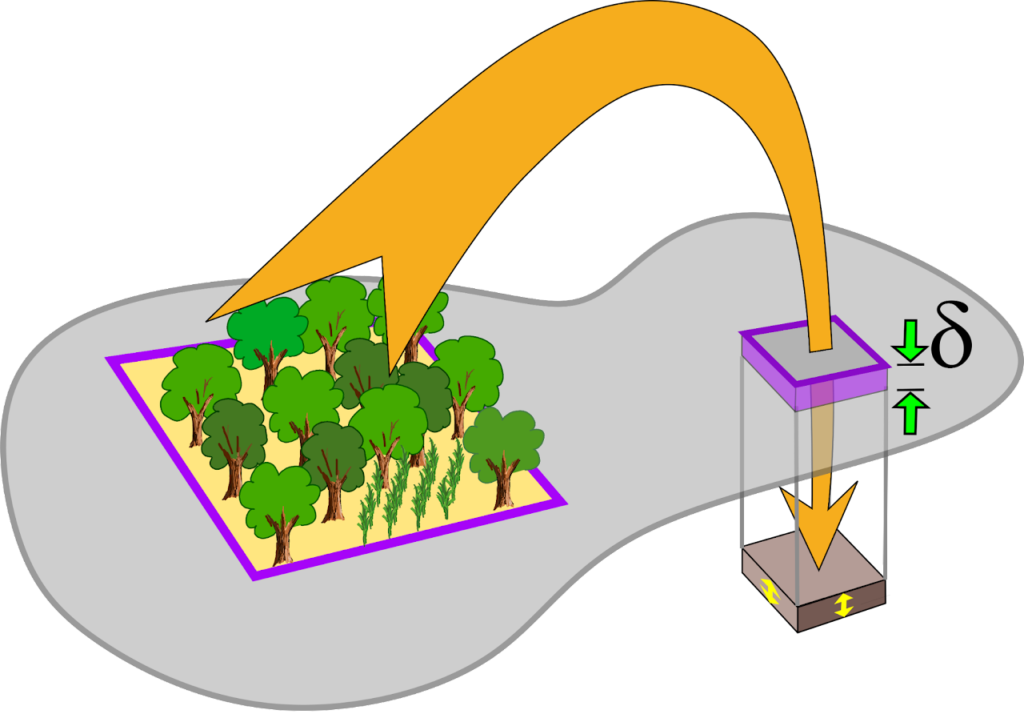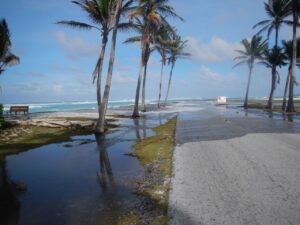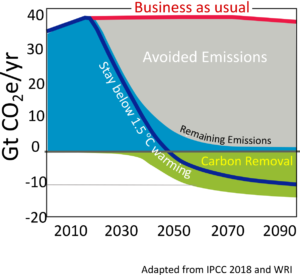Concept
Carbon SIRGE is a method of storing carbon in shallow geologic formations by injecting particles of carbon-bearing materials, like wood or other biomass.
The injection process creates lenses of injected particles. The grey layer in the picture above is an example of an injected lens. Large volumes of solid particles can potentially be accommodated by repeating the injection process many times and creating many lenses.
Injecting into saturated anoxic conditions beneath the water table will suppress degradation of wood to lock the carbon in place.
The ground surface is lifted slightly during each injection, and after many injections the ground surface can be lifted enough to reduce the risk of flooding in low-lying areas.
SIRGE stands for Solid Injection to Raise Ground Elevation, a term that was coined in a paper published in 2010 to address reducing flood risk.
The name Carbon SIRGE arises from using solids containing carbon to implement SIRGE.
Carbon SIRGE was first described in this paper published in 2023
Carbon And Elevation

Present conditions where carbon is removed from the atmosphere by photosynthesis and returned when biomass decays and biofuels are burned. Flood damage and loss of coastal ecosystems are increasing due to sea-level rise and subsidence (SLR+S), increasing storm intensity and other factors.
Wood particles are injected into shallow saturated conditions to store carbon. Carbon return to the atmosphere is reduced by limiting decay and avoiding burning, resulting in net atmospheric removal. Trees are re-planted for sustainable removal.
Injection will raise ground elevations and in some locations this can help reduce flood risk to houses or infrastructure. Raising elevations can also help reduce damage to ecosystems caused by seawater intrusion
Natural and Technological
All methods of carbon storage require two basic steps, (1) separating CO2 from the atmosphere, and (2) preventing it from returning to the atmosphere. Carbon SIRGE uses natural photosynthesis to separate CO2 at low cost, and available injection technology to isolate the carbon from the atmosphere. It is a hybrid of natural and technological carbon storage. All methods of carbon storage require two basic steps, (1) separating CO2 from the atmosphere, and (2) preventing it from returning to the atmosphere. Carbon SIRGE uses natural photosynthesis to separate CO2 at low cost, and available injection technology to isolate the carbon from the atmosphere. It is a hybrid of natural and technological carbon storage.

Mitigation and Adaptation
Society will need to remove carbon from the atmosphere at a rate of Gigatons of CO2 equivalent per year in the near future in order to mitigate the effects of climate change. We also need to adapt to the effects of climate change that are already occurring, like improving resiliency to flooding. Carbon SIRGE can contribute to both mitigation and adaptation to climate change.



